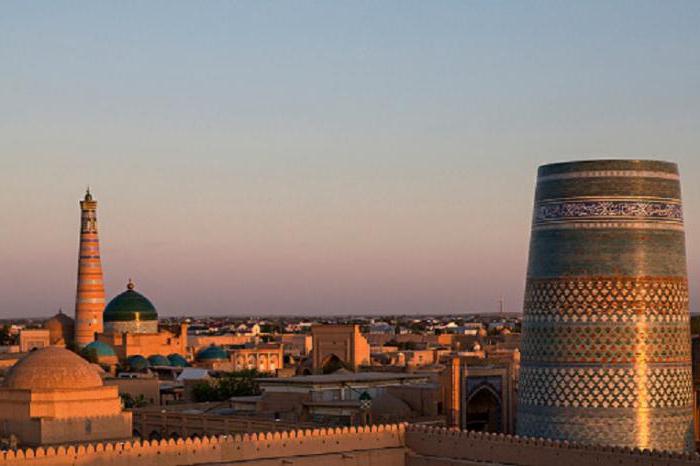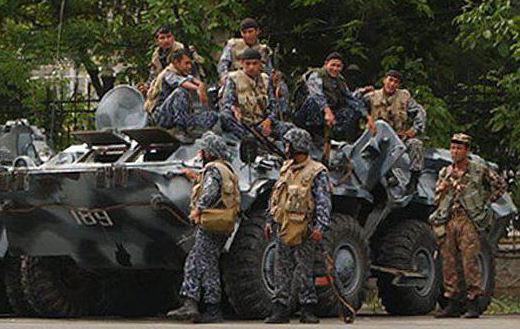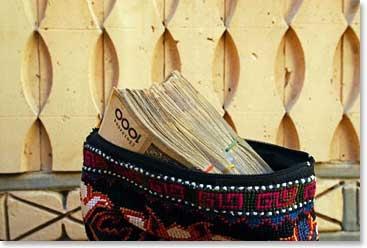The most northern region of the Republic of Uzbekistan -Khorezm region - is located on a lowland plain, part of which is the ancient delta of the Amu Darya River, the other part in the west and south-west adjoins the Karakum Desert, where the border with Turkmenistan passes. It also borders with the Bukhara region and the Karakalpak region of Uzbekistan.

Administrative areas
On the border with Turkmenistan is Khorezmregion. Urgench is its capital. A small area occupies less than 2% of the total area of Uzbekistan - 6.3 thousand square meters. kilometers On its territory there are 3 cities (Urgench, Khiva, Pitnak) and 9 villages. The total number of administrative districts (fogs) is 11 and the city of regional submission is Urgench. This is a modern industrial city with a developed infrastructure. 163 thousand people live in it. There is public transport. There is a long-distance trolleybus between Urgench and Khiva.
Nature of Khorezm
Khorezm region is located on the shorethe deep Amu Darya, which serves as a source of water in this semi-desert region. The river, which flows through flat terrain, has a large floodplain and gentle banks, which are flooded during the spring flood. Due to its wide spills, which bring silt, poor saline soils give a rich harvest. The waters of the Amu Darya are widely used for irrigation. In Soviet times, a powerful irrigation system was created, which includes irrigation canals Shavat, Klychbai, Palvan-Gazavat, Tashsaki and others.
The south of the region has many small lakes, mostpart of the saline, marshy areas and salt marshes, overgrown with tugays - overgrowths consisting of poplar, willow, clematis, sucker and other plants of the semi-desert zone. Lakes and swamps are formed by flooding the area with flood and groundwater. The river is rich in fish, catfish, asp, bream, sabrefish, silver carp, grass carp and other species are found here. Wild boars, Bukhara deer, hares, reed cats, badgers and other fauna species are found in the tugai thickets.

Agriculture and industry
Khorezm region, areas of which are mostlycultivate cotton and agricultural products, is considered agrarian-industrial. The population is mainly engaged in farming on irrigated land. The main crop is cotton, which takes up most of the total gross output. To protect the fertile soil layer from the winds along the fields, many mulberry trees were planted, which served as an incentive for silkworm breeding, which serves as a raw material for sericulture. Grain, vegetables and fruits are grown in the region. World-famous sweet and aromatic Khorezm melons grow here.
Промышленность в основном направлена на processing of agricultural products, in addition, in the area there are enterprises for the production of cotton and silk fabrics, there are sewing and knitting production. Khorezm region has always been famous all over the world for its famous Khiva carpets. There is a large carpet manufacture in Khiva.
The region’s subsoil is rich in oil, gas, gold, silver, other rare earth metals, marble and granite. They are mined and processed.

Ancient land of Khorezm
I want to clarify that the land of Khorezm, so itcalled and called at present, is Khorezm region. Urgench was not always its capital. Once in antiquity, a city with such a name existed and was located 150 kilometers from the present Urgench. But for unknown reasons, the Amu Darya changed its course and people left it.
The nature of the area does not shine with beauty, butless tourist flow increases from year to year. This is facilitated by the ancient history of Khorezm, its magnificent monuments that have been preserved, restored and appear before tourists in pristine beauty. International archaeological expeditions are constantly working in the region, exploring ancient settlements and settlements, of which there are many.
Khorezm is considered the cradle of humancivilization. Archaeologists found that the settlement of land took place in the VI-V millennium BC. The first mentions of Khorezm were contained in the “Avesta” (I millennium BC). According to the legends, this land was the birthplace of the famous Zarathustra - a priest and prophet, the founder of Zoroastrianism, who was given the revelation of Ahura Mazda, having the appearance of "Avesta". This is the first religion on earth.
For thousands of years, the land of Khorezm has seen manyevents, the rise and fall of civilizations, conquests, destruction and new achievements, leading cities to prosperity. Science and art developed in the cities of Khorezm Urgench and Khiva. The eternal struggle for water allowed the creation of ancient irrigation facilities that turned lifeless salt flats into a blooming oasis. The heritage of the past is ancient architectural monuments, tourists from all over the world come to see them.

Pearl of Uzbekistan - Khiva
Ancient Khiva - the former capital of the Khiva kingdom,incorporated into the Russian empire at the end of the XIX century, - leads its history from ancient times, but reached its greatest prosperity in the XIX-XX centuries. During this time, amazing architectural structures were built on its territory, which are included in the UNESCO lists as world heritage sites.
Most of them are concentrated in Ichan-Kala.This complex, in its essence, is an ancient city, surrounded by powerful fortress walls. The most outstanding architectural monuments: Kalta Minar minaret, Muhammad Amin Khan madrasah, Muhammad Rahim Khan palace, Bibi Khojar mausoleum, Shahimardan mausoleum, Sheikh Mavlon Bobo mausoleum.

Khazarap district
The southernmost is Khazarasp districtKhorezm region, it includes 15 settlements, the largest of which is the city of Pitnak. Until the mid-1990s, it was called Friendship. The Urgench-Turkmenobad railway line passes through it. It operates a car factory.
The center of the district is the ancient city of Hazarasp.On its territory, preserved fragments of ancient fortress walls, in which there are loopholes to protect the city. The corners of the walls crowned the tower. During the excavations carried out fragments of ceramics, whose age was defined as the I millennium BC. To the city from the Amu Darya dug a large canal that was navigable.

Koshkupyrsky District
Another confirmation of the ancient land receivedKhorezm region - Koshkupyrsky district, which is the most remote region of Uzbekistan. On its territory there is a settlement Koshkupyr, not far from which there is Imorat-bobo - an architectural complex located on the territory of an old cemetery. It includes a rural mosque with a minaret and three mausoleums standing apart from each other. The area is quite backward. Engaged in farming.












